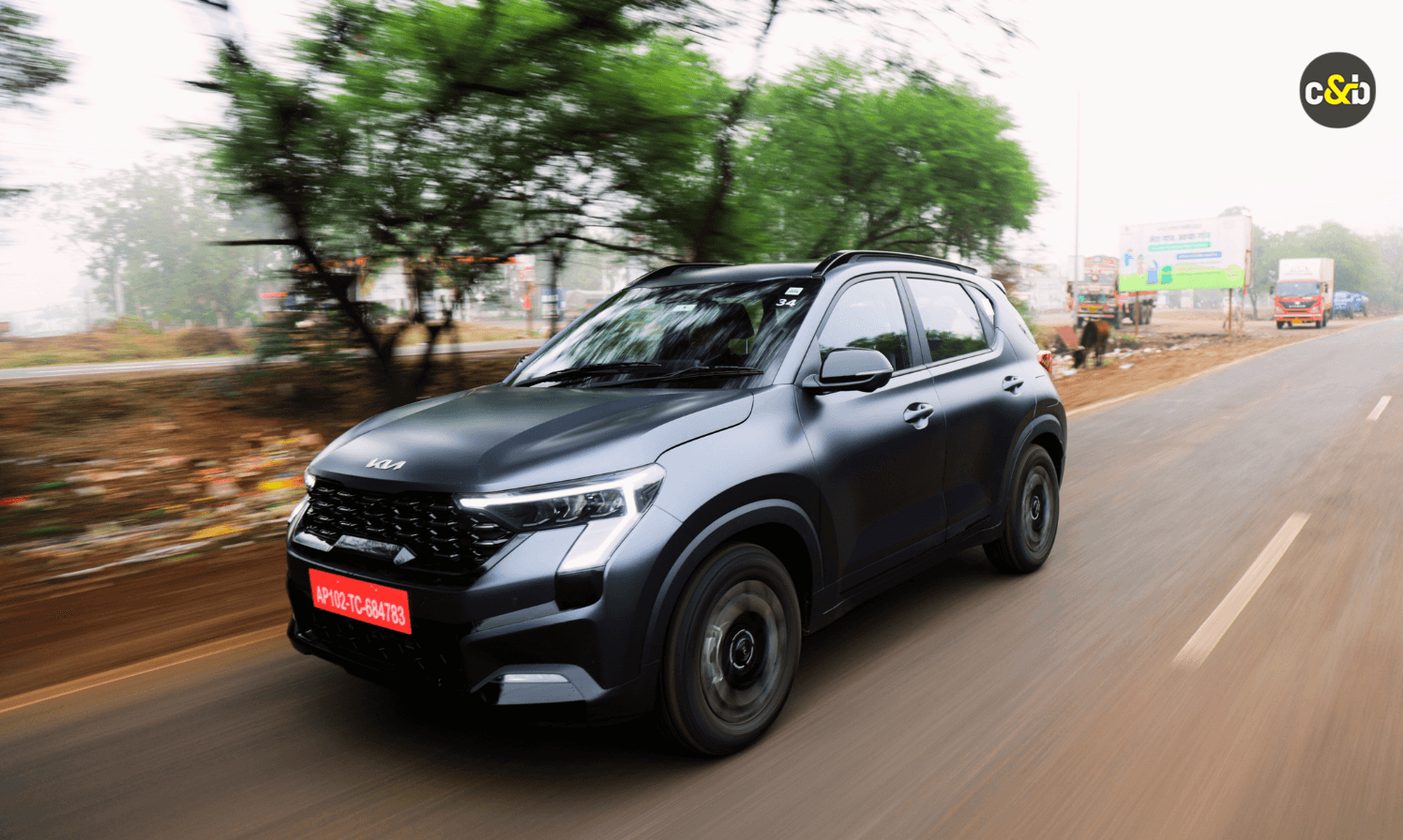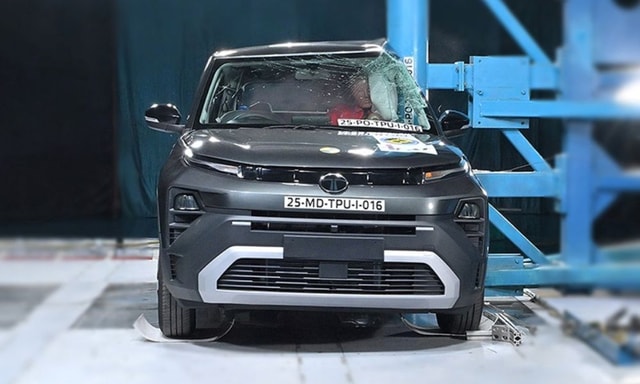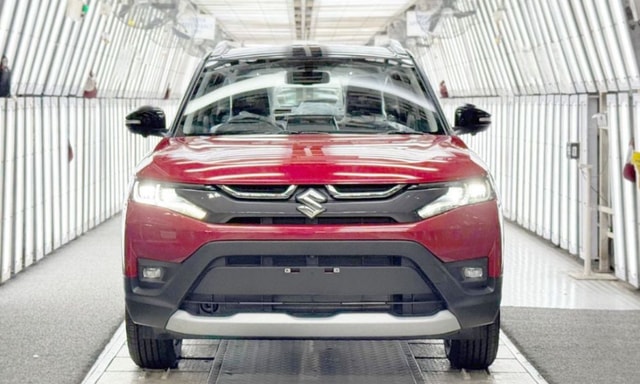2024 Kia Sonet Facelift Review: It’s Better Than Ever!

- The 2024 Kia Sonet feels like a better product than before in every regard
- You now get power adjustable driver seat, sun blinds and Level 1 ADAS
- The diesel version now comes with a manual gearbox as well
It was back in 2020 when Kia India entered the subcompact SUV segment with the Sonet. Built on the same platform as the Hyundai Venue, the Sonet managed to surpass its cousin by creating some new benchmarks in the segment. Fast forward four years, and now Kia has given the Sonet a mid-life facelift. A refreshed exterior, a decked-up interior, and a host of new and updated features and tech. Frankly, the changes are plenty. Having said that, the real question is are these changes truly substantial or simply superficial? Well, let’s find out.
Now as before, the Sonet continues to be offered in three key trims – Tech-Line, GT-Line and X-Line. And I got to sample the latter two, in the turbo petrol and diesel guises, respectively.
Also Read: Kia Sonet Facelift: Variants Explained
Design & Styling
Visually, it seems the Sonet has taken a page out of the Seltos’ book when it comes to styling. The signature Tiger-Nose grille looks a lot more imposing with the 3D embossed elements. It’s flanked on either side by this new inverted L-shaped cluster which houses the new crown jewelled LED headlamps and the star-map pattern LED daytime running lamps. Similar to what we have seen in the Seltos.
Kia has maintained the same design language across the variant line-up. However, all trims below the HTX option get halogen headlamps. At the same time, the base level HTE and HTK trims miss out on the star-map pattern LED DRLs. Also, while the GT and X-Line trims now get a pair of new, sleeker LED foglamps, the Tech-line option continues to feature the older ice-cubed pattern.
That said, the visual differences between the three trim options have also lessened. The GT-Line trim which used to come with its namesake badging on the grille no longer gets it, and Kia has also dropped the red accents. In fact, the only visual difference between the GT-Line and X-Line is that the former gets dark chrome styling inserts, instead of the piano black elements seen on the latter. That’s good because the all-black treatment makes the styling bits look a lot more cohesive, which otherwise feels a bit too busy on the other trims.
Also Read: 2024 Kia Sonet Facelift: All You Need To Know
From the profile, the Sonet more or less looks the same, however, you get new alloy wheels. There are two different design options for the 16-inch crystal cut alloys on offer. One for the top-spec Tech-Line trim (HTX+), and a different one for the GT-Line & X-Line options. Also, depending on the variant you choose, the lower-spec trims get either a set of 15-inch steel wheels or a set of 16-inchers. While none of the designs really appeal to me, it’s always good to have options.
Like the front, the rear section too takes inspiration from the new Seltos. So yes, here too you get a star-map pattern connected LED taillamps, which frankly looks quite nice and premium. The bumper design has also changed and depending on, which variant you choose - GT-Line or X-Line - here too you either get piano black inserts or grey inserts. Now the Sonet also comes with a roof-mounted spoiler.
Interior and Cabin Features
Like the exterior, the cabin too has been updated and the changes are quite substantial. You get a refreshed layout for the dashboard with new trim options. Depending on the variant, there are 5 different interior trim and upholstery to choose from. While the GT-Line comes with dual-tone black and white faux leather upholstery, the X-Line gets an all-black treatment with sage green leatherette upholstery. Both borrowed from the Seltos.
New creature comforts on offer include a 4-way power adjustable driver seat. A very useful features if you ask me. Now you can adjust it for reach, and backrest position, however, for height adjustability, you still have to use a lever. Also, now in addition to a wireless phone charger, you get a Type C USB fast charger up front along the Type A port for connectivity. And yes, seat ventilation is still on offer driver and front passenger. You also continue to get an electric sunroof and a premium surround sound system from Bose.
Now, one thing that don’t see a lot of manufacturers do in this segment, is work on improving rear seat comfort. But Kia has taken some suggestions and made a lot of improvements in that area. Firstly, the company has improved the under-thigh support by extending the seats by 21 mm. However, if you are above 5.10 feet or above then you won’t notice it. Also, I am 5.9 feet tall and even with the driver seat set to my position, the leg room at the back was just about right.
You still get a central armrest as before with cup holders, but the big change over here is that now you get two Type-C USB chargers, so yes, no need to fight over charging ports. Of course, you continue to get the smart air purifier with virus protection as well, however, the one feature that you don’t find even in some luxury cars is given in the new Sonet. And that is privacy blinds. There’s no change in boot capacity as you continue to get a luggage area of 385 litres.
Infotainment and Tech
The Sonet was always loaded with tech, and now it has gone to the next level. The 10.25-inch touchscreen infotainment system comes with more features including the updated Kia Connect system. So you get over 70 connected car features, across 5 different usage points - Safety & Security, Convenience, Remote Control, Navigation, and Vehicle Management. This also includes a smarter voice assistant that also understands a host of new Hinglish commands. The top-spec model still gets wired Android Auto and Apple CarPlay, while the lower variants get wireless functionality. I know, still weird.
Anyhow, the big change in the tech department is that now you also get a fully digital 10.25-inch instrument cluster as well. The display is very intuitive, and in addition to the usual bits like tacho and speedometer, it shows a bunch of additional information like media and Advanced Driver Assistance Systems functions. Yes, the Sonet now comes with Level 1 ADAS.
Safety
When it comes to safety features, Kia has left no stone unturned to make the Sonet a stand-out product. The subcompact SUV comes with 15 standard safety features, including – 6 airbags, anti-lock braking system with brake assist, hill start assist, vehicle stability management, rear parking sensors, tyre pressure monitor and more. The Sonet also comes with 3-point seatbelts for all occupants with remainders, and electronic stability control, which in my books are very important. In addition to that the higher-spec models also get ISOFIX child seat mounts, cruise control and for the first time, 360-degree view cameras as part of the ADAS unit.
Now, there are 10 different autonomous functions on offer including – Forward Collision Warning, Forward Collision Avoidance Assist, Lane Keep, Lane Departure and Lane Following Assist, and Lead Vehicle Departure Alert. The Sonet also gets High Beam Assist and Driver Attention Warning functions. During our short experience, most of these functions worked fine and I appreciate Kia offering ADAS in this segment.
Petrol Engine Performance
I started my drive with the X-Line trim which was equipped with the 1.0-litre turbocharged petrol engine. In terms of output nothing has changed, the motor continues to produce 118 bhp and 172 Nm of peak torque. Now, my car came with the 7-speed dual-clutch automatic transmission, one of the better gearboxes Kia has to offer.
The other option with this engine is of course the 6-speed Intelligent Manual Transmission (iMT), however, my pick would be the DCT option. The shifts are quite nice and precise, and it works smoothly.
Having said that, there is a noticeable turbo lag in the lower revs, and the engine really comes alive only after the 2500 rpm mark. And that is when you get to access the full potential of this motor. Also, while I wish the dual-clutch transmission was a bit more engaging, Kia does offer paddle shifters with the Sonet. So, if you want to make things a bit more interesting, simply shift to manual mode and you can take the controls in your hand.
Also Read: Kia Sonet Facelift Fuel Efficiency Figures Revealed
So, while not much has changed with the petrol models, how about the diesel version?
Diesel Engine Performance
It was the GT-Line trim that was equipped with the diesel engine, and one big change this time is that you no longer get two different variations of the engine. You only get the more powerful 1.5-litre oil burner, which comes with Variable Geometry Turbo (VGT). Yes, it’s the same engine that powers the Seltos as well and the power output also remains unchanged - 114 bhp and 250 Nm of peak torque.
Now, I have driven this engine in the past and we know this is quite torquey, however, in the Sonet it feels quite noisy. A lot of engine noise seeps into the cabin, especially, in the initial revs when the engine tries to build up power. So yes, that is one fault of the engine that continues to persist.
In terms of transmission choices, Kia offers three options right now. A 6-speed iMT gearbox, then you have the 6-speed automatic torque convertor, the one that I was driving. Kia has also brought back the 6-speed manual gearbox option, however, currently, it’s not available in the company’s fleet, so I didn’t get to drive it. However, the gearbox option will be available for customers from February 2024.
Now compared to the turbo petrol option, the diesel version with the torque convertor, certainly felt had more lag. And that could be because the transmission is tuned for efficiency. So, it would be interesting to find out how the manual version performs.
Ride and Handling
When it comes to the driving dynamics, nothing has changed in that department. The ride quality is certainly nice, it is a bit on the softer side, so it takes on all the undulations on the road quite nicely, giving you a nice ride quality. However, when it comes to handling, I feel the Sonet is nice, but there is room for improvement.
It has good straight-line stability, and the steering, despite lacking feedback feels light and easy. However, when you are trying to take a corner a bit too aggressively, the SUV does not impart enough confidence. So that is one thing that Kia should have worked on.
Verdict and Price Expectation
So, to answer the question I asked in the beginning. Yes, the changes made to the Sonet are quite substantial and useful. Be it styling, features or tech, the car is a step above in every regard. The outgoing Sonet was priced between Rs. 7.79 lakh and Rs. 14.89 lakh (ex-showroom, Delhi). While Kia might go for an aggressive introductory price, I would expect a bump of at least Rs. 25,000 or more across the variant line-up. The prices are expected to be announced sometime in January 2024.
Photos: Pawan Dagia
Latest News
 Jaiveer Mehra | Jan 20, 2026Tata Punch Facelift Bharat NCAP Crash Test Scores Revealed; Gets 5-Star RatingFacelifted internal combustion Punch secures 30.58 out of 32 for adult occupant protection and 45 out of 49 for child occupant protection.1 min read
Jaiveer Mehra | Jan 20, 2026Tata Punch Facelift Bharat NCAP Crash Test Scores Revealed; Gets 5-Star RatingFacelifted internal combustion Punch secures 30.58 out of 32 for adult occupant protection and 45 out of 49 for child occupant protection.1 min read Seshan Vijayraghvan | Jan 20, 2026Maruti Suzuki To Invest Rs. 35,000 Crore For Setting Up New Manufacturing Plant In GujaratThe new facility will come up in Khoraj, on 1,750 acres of land provided by Gujarat Industrial Development Corporation (GIDC).2 mins read
Seshan Vijayraghvan | Jan 20, 2026Maruti Suzuki To Invest Rs. 35,000 Crore For Setting Up New Manufacturing Plant In GujaratThe new facility will come up in Khoraj, on 1,750 acres of land provided by Gujarat Industrial Development Corporation (GIDC).2 mins read car&bike Team | Jan 20, 2026Bajaj Pulsar 125 Updated With LED Headlamp, Indicators; Prices Start From Rs 89,910Updates are limited to the Pulsar 125 Carbon Fibre series.1 min read
car&bike Team | Jan 20, 2026Bajaj Pulsar 125 Updated With LED Headlamp, Indicators; Prices Start From Rs 89,910Updates are limited to the Pulsar 125 Carbon Fibre series.1 min read Seshan Vijayraghvan | Jan 20, 2026All-Electric Toyota Urban Cruiser EBella Introduced; Booking Open For Rs. 25,000Prices for the Toyota Urban Cruiser eBella are yet to be announced, but bookings are open at Rs. 25,000.1 min read
Seshan Vijayraghvan | Jan 20, 2026All-Electric Toyota Urban Cruiser EBella Introduced; Booking Open For Rs. 25,000Prices for the Toyota Urban Cruiser eBella are yet to be announced, but bookings are open at Rs. 25,000.1 min read Jaiveer Mehra | Jan 20, 2026Skoda Kodiaq RS India Launch In Q2 2026; Additional 100 Units Of Octavia RS India-BoundAside from debuting the facelifted Kushaq in India, Skoda had some big product announcements for the year, including a second batch of Octavia vRS and the new Kodiaq vRS.2 mins read
Jaiveer Mehra | Jan 20, 2026Skoda Kodiaq RS India Launch In Q2 2026; Additional 100 Units Of Octavia RS India-BoundAside from debuting the facelifted Kushaq in India, Skoda had some big product announcements for the year, including a second batch of Octavia vRS and the new Kodiaq vRS.2 mins read Jaiveer Mehra | Jan 20, 20262026 Skoda Kushaq Facelift Revealed With New Tech, Powertrain Updates2026 Kushaq gets a notable styling refresh, new features and a new 8-speed automatic gearbox option for the 1.0 TSI engine.3 mins read
Jaiveer Mehra | Jan 20, 20262026 Skoda Kushaq Facelift Revealed With New Tech, Powertrain Updates2026 Kushaq gets a notable styling refresh, new features and a new 8-speed automatic gearbox option for the 1.0 TSI engine.3 mins read
 Amaan Ahmed | Jan 17, 2026Bajaj Chetak C25 First Ride Review: Basic, Likeable E-Scooter For First-Time RidersThe Chetak C25, in quite a few ways, is poles apart from the larger and more powerful 30 and 35 Series models, but in its mannerisms, it is very much a Chetak.8 mins read
Amaan Ahmed | Jan 17, 2026Bajaj Chetak C25 First Ride Review: Basic, Likeable E-Scooter For First-Time RidersThe Chetak C25, in quite a few ways, is poles apart from the larger and more powerful 30 and 35 Series models, but in its mannerisms, it is very much a Chetak.8 mins read Bilal Firfiray | Jan 9, 2026Toyota Urban Cruiser Hyryder: 10,000 km Long-Term ReviewAfter spending over three months and 10,000 km with the Toyota Urban Cruiser Hyryder Hybrid, we were impressed by its real-world mileage, seamless hybrid, practical comfort, and Toyota reliability. Is it the best C-SUV then?5 mins read
Bilal Firfiray | Jan 9, 2026Toyota Urban Cruiser Hyryder: 10,000 km Long-Term ReviewAfter spending over three months and 10,000 km with the Toyota Urban Cruiser Hyryder Hybrid, we were impressed by its real-world mileage, seamless hybrid, practical comfort, and Toyota reliability. Is it the best C-SUV then?5 mins read Seshan Vijayraghvan | Jan 8, 20262026 Mahindra XUV 7XO Review: Big On Tech, Bigger On ComfortThe new Mahindra XUV 7XO is flashier, feature packed, and comes with more advanced tech. But are the changes just incremental or actually substantial?1 min read
Seshan Vijayraghvan | Jan 8, 20262026 Mahindra XUV 7XO Review: Big On Tech, Bigger On ComfortThe new Mahindra XUV 7XO is flashier, feature packed, and comes with more advanced tech. But are the changes just incremental or actually substantial?1 min read Preetam Bora | Jan 10, 2026Simple One Gen 2 First Ride Review: 265 km Claimed Range!The Gen 2 model of Simple Energy’s first electric scooter gets a fair few updates, including new features, tech, more range and lighter weight. We spent a couple of hours with the Simple One Gen 2 to find out if it manages to impress.6 mins read
Preetam Bora | Jan 10, 2026Simple One Gen 2 First Ride Review: 265 km Claimed Range!The Gen 2 model of Simple Energy’s first electric scooter gets a fair few updates, including new features, tech, more range and lighter weight. We spent a couple of hours with the Simple One Gen 2 to find out if it manages to impress.6 mins read Amaan Ahmed | Jan 3, 2026VLF Mobster 135 300 KM Review: Fun But FlawedA 125 cc scooter with Italian design and Chinese genes is a rare combination, and while some may be tempted to dismiss it because of its origins, the VLF Mobster shows 125s can also be exciting – but not without compromises.11 mins read
Amaan Ahmed | Jan 3, 2026VLF Mobster 135 300 KM Review: Fun But FlawedA 125 cc scooter with Italian design and Chinese genes is a rare combination, and while some may be tempted to dismiss it because of its origins, the VLF Mobster shows 125s can also be exciting – but not without compromises.11 mins read
































































































































